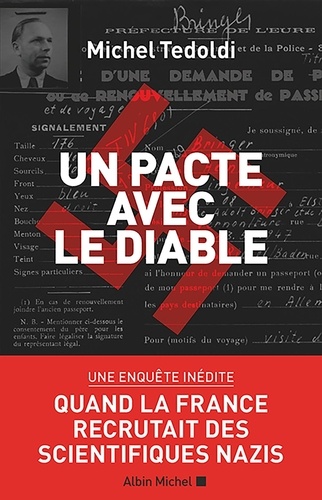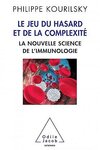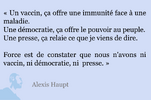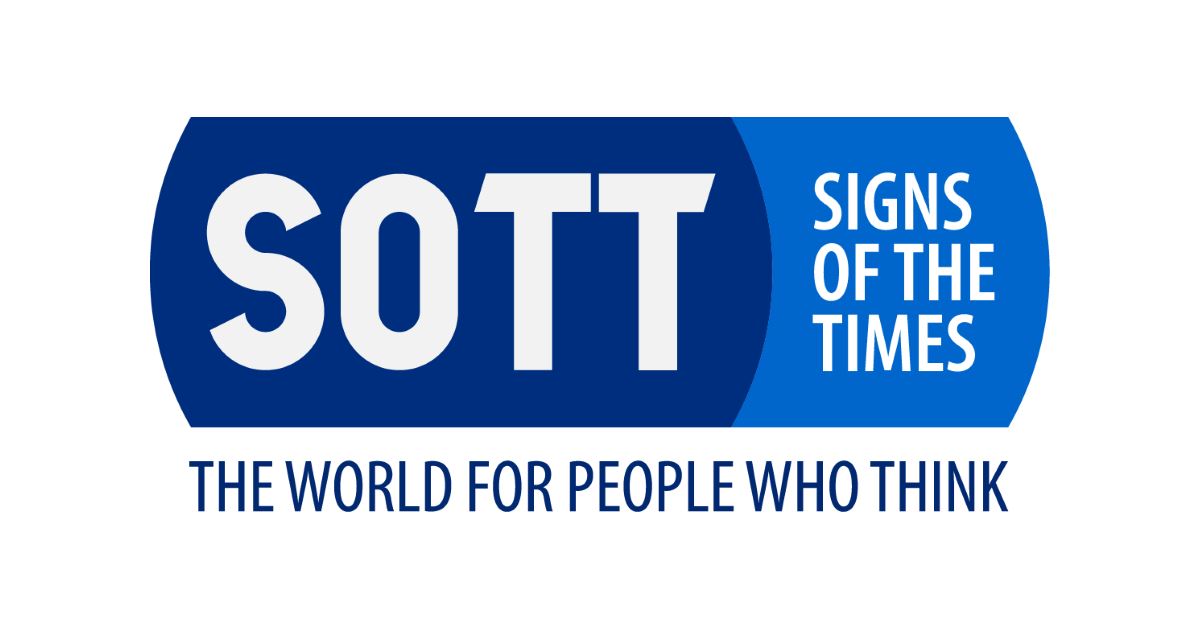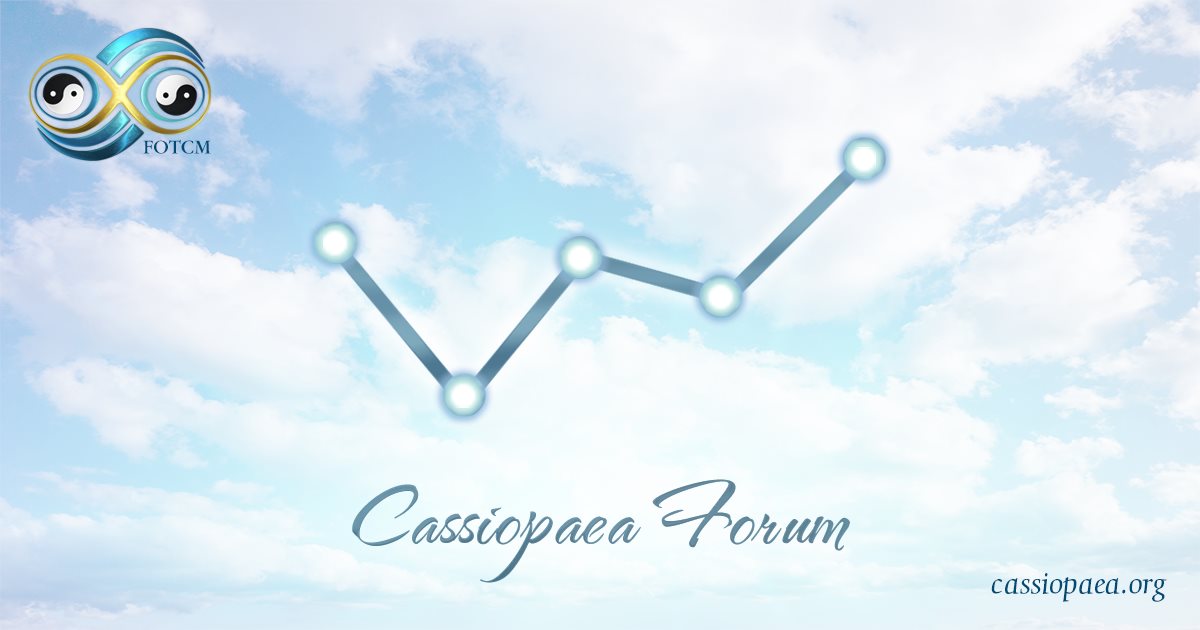Posted on
22 avril 2023 by
Gérard Maudrux
De Gaulle aurait dit :
« des chercheurs qui cherchent, on en trouve, mais des chercheurs qui trouvent, on en cherche ». Désolé, des chercheurs qui cherchent, on n’en trouve plus chez nous, mais on en trouve dans les pays plus pauvres. Chez nous on en trouve dans les grands laboratoires, mais ils cherchent le profit avant le résultat.
CEUX QUI CHERCHENT
Pendant que les pays occidentaux interdisaient non seulement de trouver mais aussi de chercher un traitement efficace contre le Sars-Cov-2, faisant confiance aux grands laboratoires pharmaceutiques pourris de multiples condamnations pour fraudes dans leurs résultats et publications, les pays dits pauvres, c’est à dire sans intérêt financier pour les laboratoires pharmaceutiques, ont eu une approche beaucoup plus intelligente. Ils ont cherché dans leur pharmacopée ancestrale, ce qui pouvait être efficace, compte tenu des propriétés pharmaceutiques de chaque produit.
Alors que, chez nous, on bloquait tout ne recherchant pas le traitement de la maladie mais la seule élimination de la spike issue d’une brillante recherche, ces pays ont fait ce que l’on nous a interdit de faire. Non obnubilés par cette spike, après avoir constaté ce dont le virus avait besoin pour se développer et par quel mécanisme il était toxique, ils ont étudié quels étaient les produits pouvant d’une part empêcher la pénétration du virus et sa multiplication (notamment sur l’ACE et l’angiotensine nécessaires au virus pour pénétrer dans les cellules), et d’autre part ce qui pouvait contrer ses effets délétères. Ils s’en sont bien mieux sortis que nous avec une mortalité globalement 4 fois inférieure à la nôtre si on tient compte des plus de 65 ans (sinon c’est 10 à 30 fois inférieure). Au tout début j’évoquais un possible facteur racial, j’avais sans doute tort, ils n’ont en fait pas jeté aux orties les recettes de grand’mère.
Ainsi, on retrouve nombre de publications au Moyen Orient et en Orient, qui montrent cette recherche intelligente. Contrairement à nous, ils n’ont pas regardé les plantes de leur médecine traditionnelle en tant que plantes, mais en fonction de leurs différents produits actifs. Les publications et les études reprenant les anciennes découvertes ont été très nombreuses. Plusieurs centaines, j’en ai sélectionné quelques-unes.
Ainsi au Pakistan,
Ahmed et Jamil, partant du constat que c’était une maladie pulmonaire causée par un coronavirus, et que « « le virus pénètre dans le corps de l’hôte en interagissant avec le récepteur ACE2 », ont très méthodiquement et logiquement recherché dans tous les travaux et les publications antérieurs (187 références)
« l’utilisation historique des plantes médicinales traditionnelles arabes ou islamiques comprenant des composés chimiques ayant des propriétés antivirales (sur ACE2), immunomodulatrices, antiasthmatiques, antipyrétiques ».
Mehmoud et Khan, en collaboration avec plusieurs universités chinoises, ont fait la même chose en étudiant les propriétés de 6 plantes et leurs interactions avec notamment ACE2, 3CLPro. En Inde,
Dey et Ghosh ont étudié les capacités de blocage d’ACE2, 3CLPro, RdRP et des furines de 20 composés phytochimiques afin de
« bloquer les récepteurs responsables de l’entrée du virus, et les protéines virales responsables de la réplication ou de la transcription ». En Iran, mêmes recherches avec
Malekmohammad.
CEUX QUI TROUVENT
Contrairement à nos chercheurs, non seulement, ils ont cherché, mais ils ont aussi trouvé. On a déjà beaucoup parlé de l’ivermectine, on n’ose plus parler (chez nous) de l’hydroxychloroquine tant on prend le risque d’être regardé de travers, pour leurs propriétés. Par contre il est un produit dont on a beaucoup moins parlé :
la nigelle. Et pourtant ! Elle semble tout aussi efficace, sinon plus efficace que les drogues que je viens de citer ! Les preuves sont là ! Des faits, rien que des faits.
Certes parler du cumin noir pour traiter le covid, cela ne fait pas sérieux du tout, j’en conviens. Cela aurait fait sérieux au XIXe siècle, mais pas au XXIe ! Et pourtant, quand on prend la peine de regarder, certaines études interpellent.
Ainsi, au Pakistan, une étude de
Sohaib Ashraf, démarrée fin avril 2020, a des résultats impressionnants. C’est une
étude ERC : Randomisée, Contrôlée, s’il vous plait, le top de la méthodologie pour plaire aux occidentaux restés méprisants. Pour que la méthodologie puisse être contrôlée, elle a été déposée par avance et par écrit sur ClinicalTrials le 15 avril 2020 sous le numéro
NCT04767087.
Dans cette étude multicentrique (4 centres), 313 patients covids, 210 atteints modérément, 103 atteintes sévères, ont reçu miel (!) et nigelle, versus placebo.
Le premier critère était la diminution des troubles, avec
reprise d’une activité normale à J6 chez 63% dans le groupe traité contre 10,9% dans le groupe placebo pour les cas modérés (p=<0,0001), et
50% sortis de l’hôpital dans le groupe traité contre 2,8% pour les cas sévères (p=<0,0001) dans le groupe non traité.
Le second critère était la clairance virale, avec
élimination du virus en 6 jours contre 10 dans les cas modérés, et 8,5 jours contre 10 dans les cas graves (p=<0,0001).
Le troisième et dernier critère était les décès chez les cas graves, 2 chez les traités, contre 10 dans le groupe non traité (p = 0,029), soit
5 fois moins de morts quand on traite avec la nigelle.
Au total : les troubles ont duré 2 fois moins longtemps avec traitement pour les cas guéris, et réduction de 80% des décès. Du miel ? Du cumin noir ? De quoi faire sourire et se moquer nos pseudo-scientifiques qui ne regarderont pas les résultats, oubliant que la médecine a toujours progressé par l’observation et la réflexion, pas à coup de dollars. Qu’ils n’oublient pas non plus, ce que nous devons à ces plantes, avec les exemples déjà cités dans mon billet précédent : que sans curare, pas d’anesthésie, que la morphine qui est le plus puisant des antalgiques vient du pavot, que l’aspirine nous vient du saule, que l’if a révolutionné la chimiothérapie du cancer du sein, que la digitaline pour le cœur vient de la digitale, j’en passe et des meilleures, sans oublier la pervenche de Madagascar pour traiter les leucémies.
Signalons au passage que dans cette étude sur la nigelle, l’efficacité dans les cas graves semble supérieure à celle de l’ivermectine si on compare avec l’
étude de République Dominicaine. Ceci dit dans la méta-analyse de Hill sur l’ivermectine, la réduction des décès est également de 80%, mais pour l’ensemble des études sans distinction de la gravité des cas, alors que les études d’Ashraf et de Morgenstern permettent de comparer uniquement les cas graves, entre les deux traitements et avec les cas non traités.
Cette autre étude de
Saïd et Abdulbaset en Égypte, également randomisée contrôlée (
NCT04981743) a séparé les patients atteints de covid modéré en 4 groupes : le premier avec nigelle, le second avec vitamine D3, le troisième avec nigelle + vitD3, le dernier sans traitement. Mêmes constatations que dans l’étude Ashraf avec
disparition deux fois plus rapide des troubles, et tests PCR rapidement négatifs, les meilleurs scores étant obtenus dans le groupe nigelle + vitD3.
NIGELLE ET THYMOQUINONE
La nigelle cultivée,
nigella sativa ou cumin noir,
est une plante annuelle de la famille des
renonculacées originaire du sud-ouest de l’
Asie. Les graines sont utilisées comme épice ou comme remède traditionnel dans de nombreux pays du monde, particulièrement dans le monde musulman. Une huile obtenue par première pression à froid est très largement utilisée depuis des siècles en application locale comme antiseptique. Ne pas confondre avec la nigelle de nos jardins,
nigella gallica, mais surtout avec nigella damascena qui, elle, est toxique.
Les vertus de l’huile de cumin noir étaient connues des pharaons dans l’Égypte antique. Dans le monde gréco-romain elle était
très utilisée par Hippocrate dans ses préparations (sous son nom grec de mélanthium). Plus tard elle faisait partie des plantes recommandées par Charlemagne au IXe siècle, ainsi que par Avicenne, médecin persan au Xe siècle. Ce cumin noir a une très grande réputation dans le monde musulman, étant recommandé par le prophète qui aurait dit
« Utilisez la graine noire car elle guérit tous les maux, excepté la mort », comme le relate
Ibn Qayyim al-Jawziyya dans ses ouvrages sur la médecine prophétique.
Les graines de cumin noir contiennent une forte teneur en huile (31%), contenant entre autres des terpenes (tels que le thymol, la thymohydroquinone et surtout la
thymoquinone) et nombre de phénols comme la
quercétine, sans oublier nombre de vitamines du groupe B, jusqu’à de l’acide vanillique ! La teneur de ces substances est très variée d’une région à l’autre, certaines pouvant contenir plus d’alcaloïdes, substances psychoactives pouvant être toxiques.
Le composé qui nous intéresse le plus ici est sans doute la thymoquinone. Cette substance avait beaucoup intéressé pharmacologues et laboratoires pharmaceutiques qui l’avaient étudié dans les années 70, en raison d’une puissante activité antioxydante et surtout anti-inflammatoire, supérieure à nombre de produits utilisés aujourd’hui. Malgré l’avantage d’une forte efficacité associée à une absence d’effets secondaire contrairement à beaucoup d’antiinflammatoires, son malheur est sans doute que la nigelle n’est pas brevetable, contrairement aux produits de synthèse.
LA THYMOQUINONE
Les vertus de la thymoquinone sont très nombreuses et ont largement été étudiées dans nombre de publications. On ne retrouve pas ces publications dans des revues de phytothérapie, mais dans des revues scientifiques comme
Frontiers of Pharmacologie,
Pharmacological Research,
Phyttotherapy Research, International Immunopharmacology,
Pharmaceutics,
Frontiers of microbiology,
Antioxydants, etc. Elles sont tellement nombreuses et variées que l’on peut penser qu’une drogue qui guérit de tout à ce point, relève du miracle et de la plaisanterie.
Je cite ce que l’on trouve dans ces études faites depuis 20 ans (
comme ici), dans le calme et la sérénité, bien avant la folie des publications de ces 3 dernières années : effets antioxydants, anti-inflammatoires, bronchodilatateurs, anti asthmatiques, immunomodulateurs, antihistaminiques, antimicrobiens et antitumoraux. Elle a également des activités protectrices pour le foie, l’estomac, les reins et le système nerveux contre certaines agressions chimiques, et régulatrices pour la tension et la glycémie.
Cela paraît peu crédible, trop beau pour être vrai. Je signale quand même que tous ces articles ne sont pas des études de gourous botanistes, mais des vérifications et de confirmations d’effets supposés, par des chercheurs en biologie, en pharmacologie, des médecins, qui concluent chaque fois en demandant que de larges études cliniques soient faites suite à leurs constatations in vitro ou chez les animaux et dans de rares études cliniques.
Ainsi dans
cet article de
Phytotherapy Research de 2004, Hajhashemi et Ghannadi (Iran) ont étudié les propriétés
anti inflammatoires en créant un œdème inflammatoire des oreilles chez la souris ou de la patte chez le rat, pour observer la rapidité de la disparition avec ou sans traitement. Les propriétés analgésiques ont été étudiées sur la réaction de la queue à diverses agressions. Il y a 20 ans déjà ces propriétés avaient été testées avec succès sur des encéphalomyélites, colites, péritonites et arthrites expérimentales (cf Salem plus loin).
Dans
cet autre article de
Phytotherapy Research de 2003, Ali et Blunden (Arabie Saoudite) relèvent dans les publications médicales différentes recherches sur la thymoquinone. Ainsi des rats traités 3 mois ont vu une augmentation de l’
hémoglobine (peut remplacer l’EPO chez les coureurs cyclistes ?) ainsi qu’une baisse de la
glycémie, du
cholestérol et des triglycérides. Ils constatent aussi qu’elle protège le foie et les reins agressés par des maladies ou des produits toxiques.
Pour les propriétés
immunomodulatrices,
cet article de Salem (Université de Caroline du Sud, USA) dans
International Immunopharcology mentionne une augmentation des réponses immunitaires via les cellules T et les cellules tueuses naturelles. Il constate également des propriétés antimicrobiennes et antitumorales envers différents microbes et cancers. Dans cet autre article de Shaterzadeh-Yazdi, on relève que
« La thymoquinone a également réduit les cytokines pro-inflammatoires induites par le LPS telles que les interleukines (IL) et le TNF-α. De plus, elle a montré un rôle immunomodulateur dans l’immunité cellulaire et humorale ».
Concernant les cancers,
cet article de 2011 de Khan et Chen (Chine) résume les actions de la thymoquinone et de l’huile de Nigella sativa contre différents
cancers avec leurs mécanismes moléculaires. Ne le prenez toutefois pas comme un anticancéreux, mais comme pour
l’ivermectine et le cancer de l’ovaire, comme un adjuvant aux traitements actuels.
Cet article de Gholamnezad et Shakeri (Iran) de 2019 reprend outre les études expérimentales et cliniques confirmant les propriétés décrites ci-dessus, pour signaler aussi les propriétés
bronchodilatatrices et préventives chez l’
asthmatique, et la prévention lors d’exposition au gaz moutarde et au soufre, passant aussi sur son action bénéfique sur différentes allergies.
Les
affections neurologiques ne sont pas en reste avec
cet article de Samarghandian et Farkhondeh (également en Iran), datant de 2018 et paru dans
CNS & Neurological Disorders, qui recense dans la littérature les effets de la nigelle ou de la thymoquinone, pour constater que :
« Les résultats de ces études ont montré des effets protecteurs contre les maladies neurodégénératives, notamment : la maladie d’Alzheimer, la dépression, l’encéphalomyélite, l’épilepsie, l’ischémie, la maladie de Parkinson et les lésions cérébrales traumatiques constatées in vitro et dans des modèles animaux expérimentaux. Il existe de nombreuses études indiquant les actions bénéfiques de cette plante dans le système nerveux, mais les projets de recherche sont rares».
Enfin
cet article de février 2023 de Maideen et Jumale (Ministère de la santé, Dubaï), paru dans
Infectious Disorders. Après avoir recensé les divers troubles des
covids longs, ils constatent que beaucoup peuvent relever d’un traitement à la graine de nigelle au vu de l’efficacité constatée dans la littérature sur ces différents troubles.
Comme pour l’artemise, j’ai voulu voir ce que donnait le résultat dans un pays entier. Je suppose que le Pakistan fait partie des grands utilisateurs de nigelle en matière de santé vu les publications. Résultat, en 3 ans, 20 fois moins de morts qu’en France et par habitant. Si on ramène à la population de plus de 65 ans pour éviter le biais d’une population plus jeune et comparer ce qui est comparable, il y a 5 fois moins de seniors au Pakistan. À démographie égale, il y a donc eu 4 fois moins de décès, malgré des infrastructures médicales très inférieures (sources : OMS pour les décès,
banque mondiale pour la démographie.
L’OMERTA
Pourquoi n’a-t-on pas entendu parler de ce traitement après le résultat spectaculaire de l’étude d’Ashraf en 2020 ? Parce que la mafia anti-traitements a parfaitement joué son rôle. L’omerta mise en place et financée par les laboratoires et les États occidentaux, avec la complicité de médecins et des médias, a fait merveille. Il fallait laisser de côté la maladie, ses troubles, ses morts, pour ne s’occuper que du traitement préventif : le vaccin et la spike. Personne n’a vraiment présenté la situation sous cet angle :
notre système de soins, qui a méprisé la prévention pendant des décennies, pour ne s’occuper que des soins, a ici, sur ordre politique, interdit de traiter la maladie, pour ne s’occuper que de cette seule prévention,
abandonnant les patients déjà atteints. Ils n’ont pas changé d’attitude devant l’échec de cette prévention, refusant toujours de traiter. Pour occulter Ashraf et la thymoquinone, les agences, les publications médicales, les médias, l’Ordre, les réseaux sociaux, ont fait ce qu’il fallait pour protéger l’industrie pharmaceutique au détriment des patients.
Le déroulement :
Dépôt de l’étude le 15 avril, début le 30 avril, fin le 29 août 2020. Les résultats ont été publiés en novembre 2020, jusque-là rien d’anormal. Dans le mois qui a suivi, j’ai évoqué cette étude sur mon blog, disant que le résultat interpellait. En même temps, paraissait un excellent article étoffé et documenté de J.M. Wendling sur
Info du jour. Donc information reprise, mais omerta du côté de la presse, des autorités responsables de la gestion de la crise et du côté du corps médical. Aucun ne lit un
« pré-print », non
« relu par les pairs ». Qui sont ces pairs qui relisent ? Des soi-disant spécialistes, payés par les revues médicales, elles-mêmes payées par les laboratoires pharmaceutiques, tout comme le sont les employés de l’Agence Européenne du Médicament, organisme financé à 86 % par les mêmes laboratoires. Notre agence à nous (ANSM), soi-disant plus autonome, attend toujours les décisions de l’EMA pour calquer les siennes, on l’a vu pour l’ivermectine.
Résultat, des médicaments présentés par les laboratoires voient leurs publications « relues », publiées et validées en quelques jours, voire quelques semaines. Celles qui démolissent les autres traitements également, comme le
Lancet avec Mehra et le Lancetgate. Par contre, quand on n’est pas dans ce circuit contrôlé par l’industrie pharmaceutique, c’est très difficile pour publier, et la « relecture » est très, très lente. Ainsi pour Ashraf, publication en pré-print sur le net le
30 novembre 2020, et l’article est officiellement publié dans une revue en
février 2023 (sur le net le
24 novembre 2022)! Plus de 2 ans d’attente, pour sortir du pré-print et que certains daignent le lire (ce qu’ils ne font pas plus !). Enfin cela n’est pas publié dans une revue clinique ou d’infectiologie, mais dans une revue de pharmacologie, non lue par les médecins, alors que, vu l’importance de cette publication, elle avait sa place dans le
Lancet ou le
British Journal of Medecine.
Pour ma part, osant évoquer des traitements possibles pour soigner la maladie, j’ai été poursuivi par l’Ordre des médecins pour ce motif, et mon blog sur le Quotidien du Médecin a été fermé quelques semaines plus tard avec une explication mensongère. En ce qui concerne l’article de
L’Info du jour, essayez, vous tombez sur une
page fermée avec la mention :
Cet article n’est plus disponible pour le motif suivant : « Google interdit les contenus provenant de sites qui contredisent le consensus scientifique ou médical, ainsi que les pratiques éprouvées. » Tous les acteurs de cette omerta ont fait le job, et bien.
Le problème est qu’à la prochaine épidémie, quelle qu’elle soit, il se passera la même chose. La technique, qui a bien marché avec les médias, bigpharma et nos politiques, sera à nouveau utilisée, tant elle a été efficace. Braves gens, dormez sur vos deux oreilles, l’industrie pharmaceutique et ses collaborateurs s’occupent bien de votre santé … et de leur santé financière.
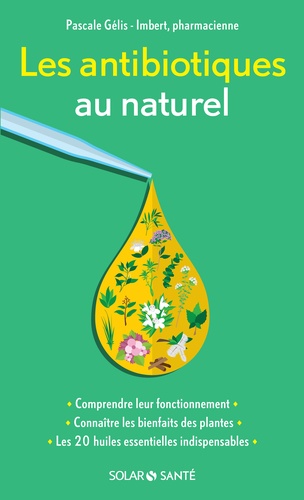
 www.decitre.fr
www.decitre.fr


